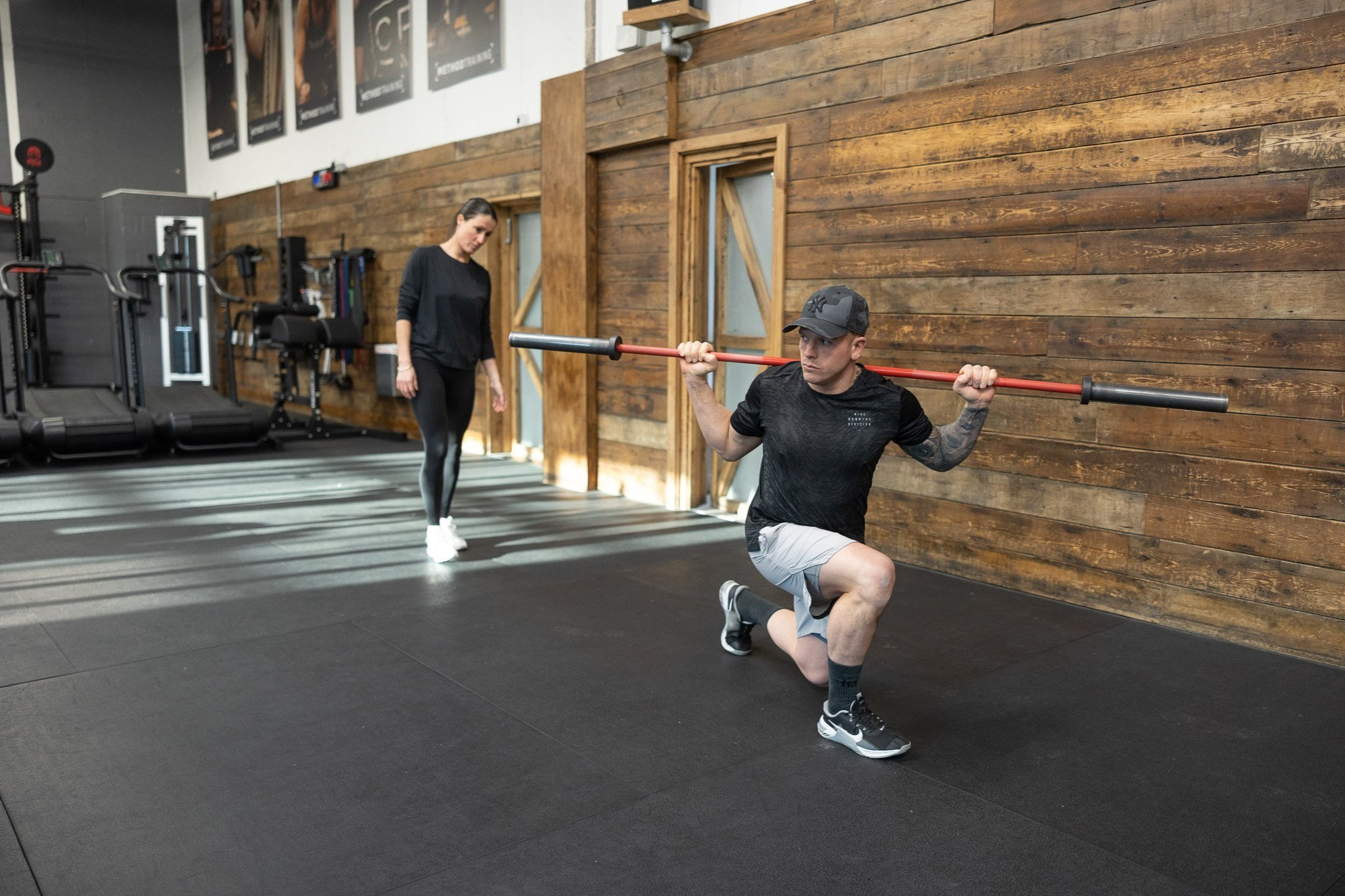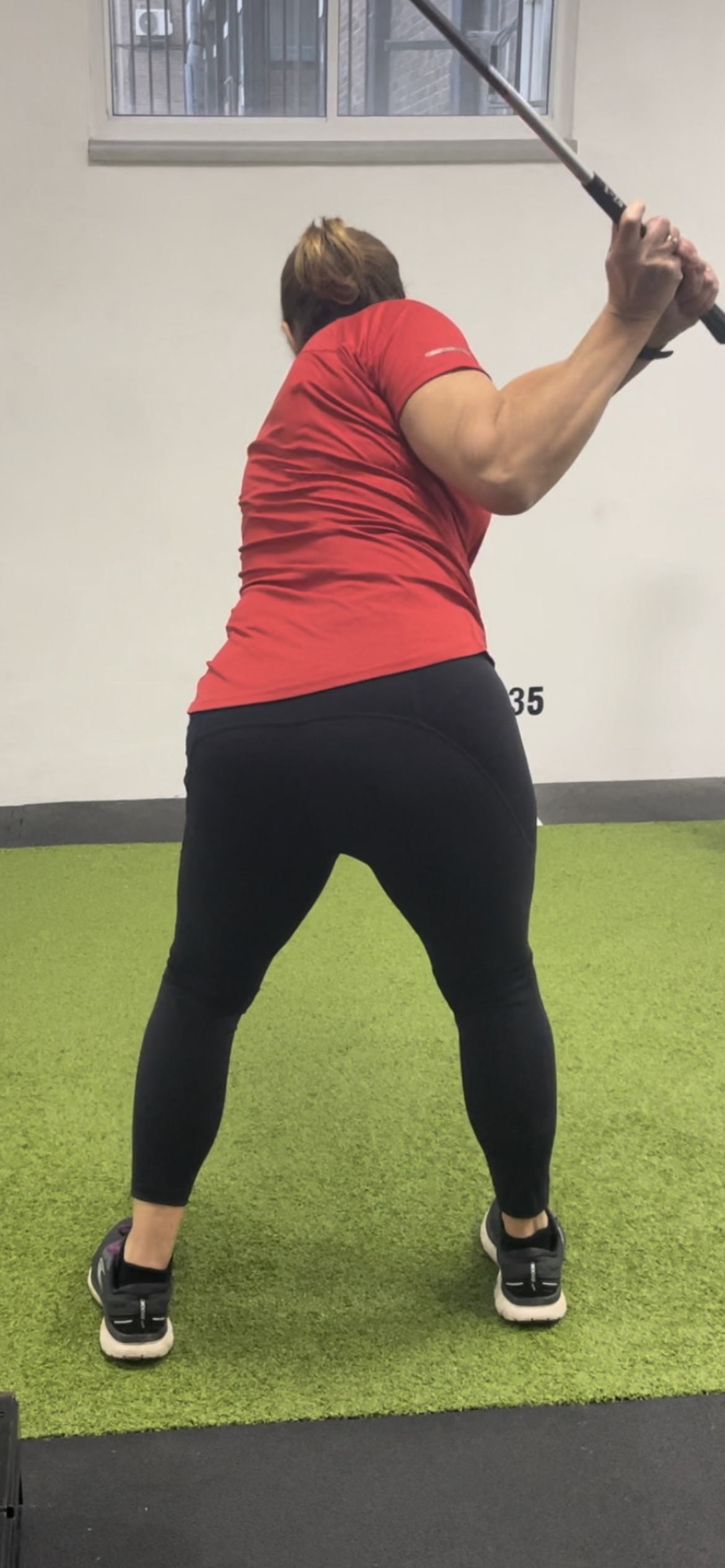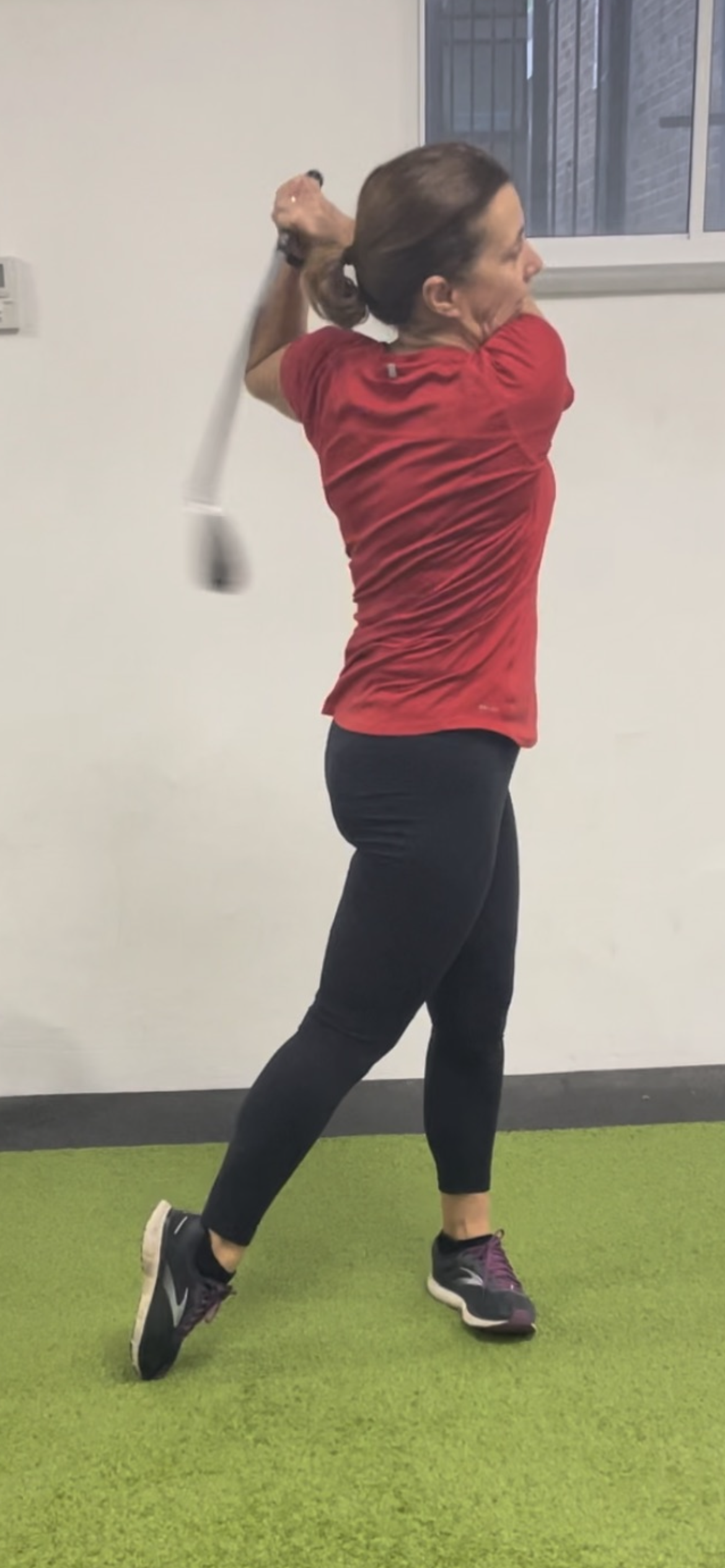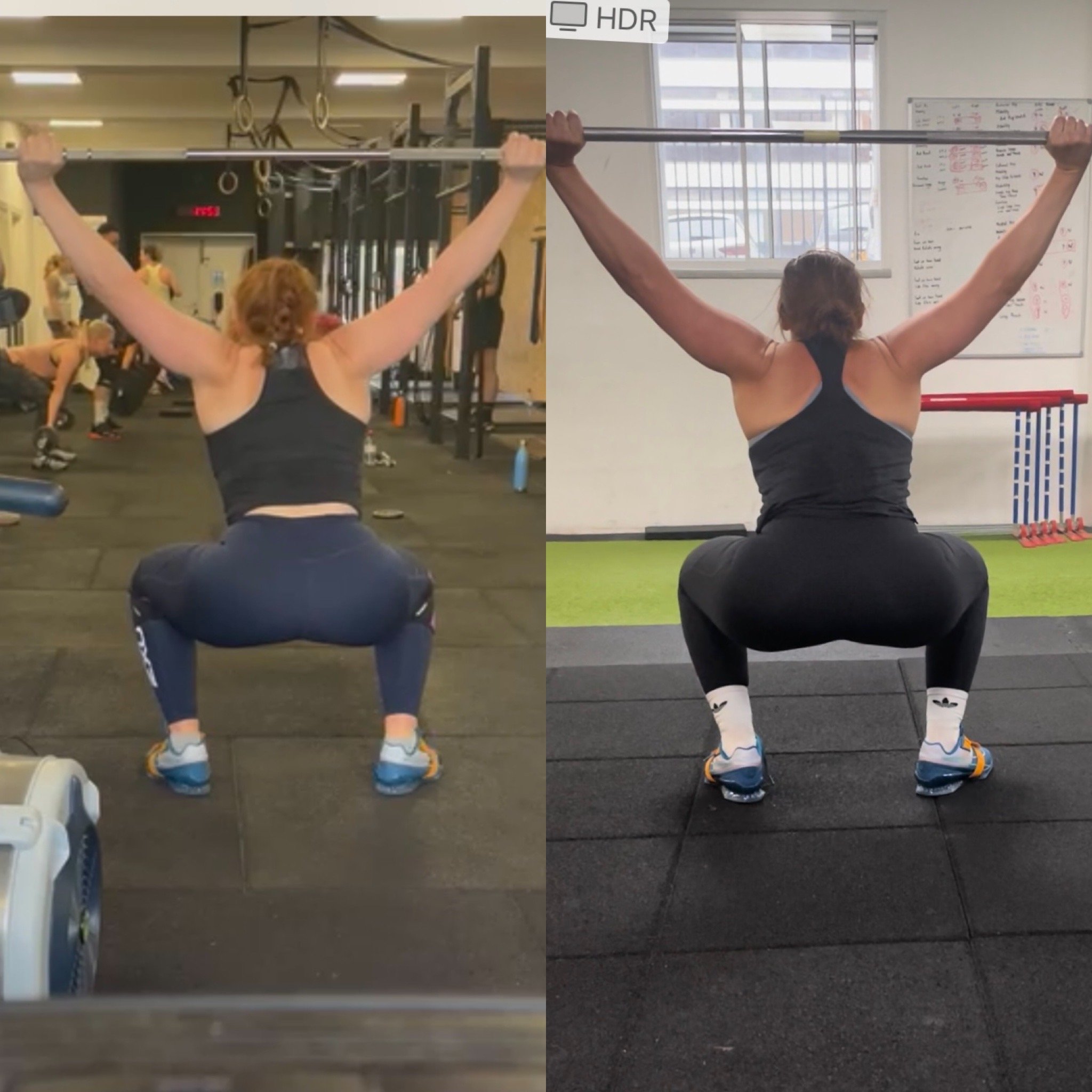
Success stories
Golf swing pain
Louise came to me with persistent left side shoulder pain that was mainly triggered after playing golf. We went in the gym and asked Louise to perform her swing to investigate further.
We then broke down the swing into its component parts. These pictures demonstrate the difference in her swing before and after working together over two sessions.
Louise was given a programme to follow to continue to work on her imbalances and is now playing golf without any shoulder pain.
NB her programme didn’t involve any isolated shoulder exercises!
Picture 1
Picture 2
Key Points
Pictures 1 and 2, look at the right posterior hip. In picture 1 the right hip remains externally rotated, creating a less stable hip. Right hip stability in the back swing gives tension to the lower back to allow the Thoracic spine to rotate. Picture 2 clearly illustrates a much more stable, loaded internally rotated right hip, allowing greater thoracic rotation and off loading the left shoulder.
Pictures 3 shows a left foot that is inverted but unstable and limited thoracic extension.
Picture 4 demonstrates a more stable left leg and a very clear improvement in thoracic lateral flexion and rotation.
Back Squat
Keith has played rugby to a high level and regularly trains at Crossfit. He has endured many injuries throughout his sporting career that had left him with persistent left sided nerve pain. Keith came to me for a Muscle Imbalance Assessment to see if there was anything to be done as he suffered daily with his back pain and back squats were a big trigger for the pain.
Video 1 shows Keith back squatting before the assessment. Notice the shift to the left side at the bottom of Keith’s squat, he is falling into the left side and therefore having to push out of the bottom of the squat predominantly using his left leg, this then creates various imbalances throughout the body.
Video 2 shows Keith’s back squat after doing his corrective work consistently. Notice he is a lot more even going in and out of the back squat and is pushing more evenly through both feet.
His feedback “Just Back squatted 130kg x 4 video is my final set. I remember struggling to do this for 1 rep.”
Keith is now pain free and enjoys the freedom to train again. He regularly takes part in Triathlons most recently completing his first half iron man.
Picture 3
Picture 4
Video 1
Video 2
Elbow pain when weightlifting
Andrew trains regularly at Crossfit and came to see me after having an Appendectomy to get back into weightlifting post op. After returning to sport Andrew noticed some left side elbow pain whilst weightlifting.
Video 1 clearly illustrates Andrew favoring his left side in the bottom position of his Snatch. Notice the bar is then leaning to the left, creating greater load and therefore strength and stability requirement to the left shoulder and arm.
Video 2 shows a clear improvement after Andrew has consistently carried out his corrective work. Notice he has a lot more even distribution of weight at the hips and shoulders going in and out of the Snatch and the bar is much more level and therefore not overloading the left side
The image below also clearly demonstrates a much more stable position between sessions.
Andrew’s feedback, is that he is feeling good movement wise and his training is going well, having recently completed the Crossfit quarter finals workouts.
Video 1
Video 2
Knee pain when weightlifting
Alice is a HART paramedic who trains regularly at a Crossfit gym and is a Mum of two young children. She came to me with right side knee pain. She had previously seen a Physio who had told her she’d irritated her Meniscus after carrying out isolated testing on a couch.
The pain hadn’t improved despite carrying out the exercises prescribed to her by the Physio. After carrying out a Muscle Imbalance Assessment in the gym we identified clear asymmetries in Alices movements whilst she was Olympic lifting.
Video 1 shows Alice at the bottom of a Snatch. Look at how the hips are rotated to the left. There is more weight is on the right side of Alices body and her right knee is forward compared to the left. As she hits the bottom position her right knee is having to assist in decelerating this left rotation.
This is a “gap” in the chain. But what is making her shift to the right side and rotate left to overload the knee?
After testing in the gym we discovered that Alice has a left to right stability imbalance, after an hour together we provided her body with more stability and Video 2 shows her at the end of the session, much more even weight distribution left to right.
Alice has continued to carry out her corrective exercises and is pain free and has managed to lift more weight since gaining more stability across all squatting movements in the gym.
Video 1
Video 2






